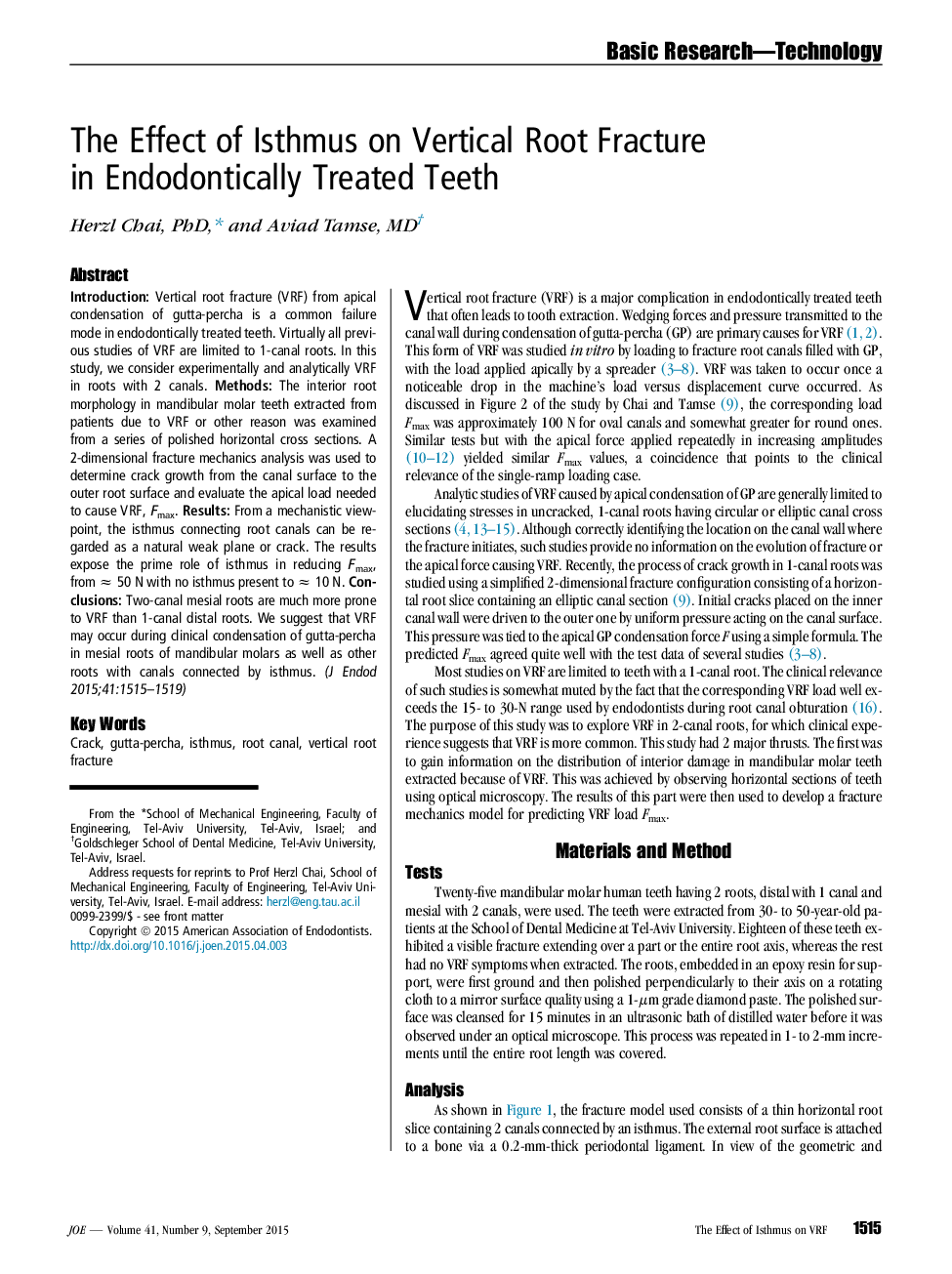| Article ID | Journal | Published Year | Pages | File Type |
|---|---|---|---|---|
| 3146602 | Journal of Endodontics | 2015 | 5 Pages |
•The effect of an isthmus connecting root canals on vertical root fracture (VRF) is studied experimentally and analytically.•Cross sections of roots with VRF were examined for interior damage.•An analytic model to assess the apical force applied to gutta-percha that is needed to cause VRF was developed.•The presence of isthmus drastically enhanced the likelihood of VRF; apical loads as little as 10 N may cause VRF in 2-canal roots.
IntroductionVertical root fracture (VRF) from apical condensation of gutta-percha is a common failure mode in endodontically treated teeth. Virtually all previous studies of VRF are limited to 1-canal roots. In this study, we consider experimentally and analytically VRF in roots with 2 canals.MethodsThe interior root morphology in mandibular molar teeth extracted from patients due to VRF or other reason was examined from a series of polished horizontal cross sections. A 2-dimensional fracture mechanics analysis was used to determine crack growth from the canal surface to the outer root surface and evaluate the apical load needed to cause VRF, Fmax.ResultsFrom a mechanistic viewpoint, the isthmus connecting root canals can be regarded as a natural weak plane or crack. The results expose the prime role of isthmus in reducing Fmax, from ≈ 50 N with no isthmus present to ≈ 10 N.ConclusionsTwo-canal mesial roots are much more prone to VRF than 1-canal distal roots. We suggest that VRF may occur during clinical condensation of gutta-percha in mesial roots of mandibular molars as well as other roots with canals connected by isthmus.
